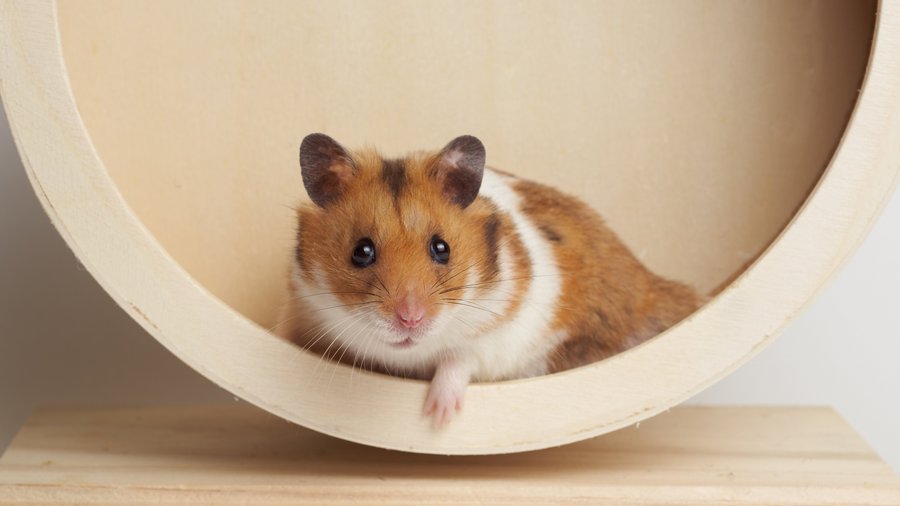Tip: 1 Give your hamster free space
Despite their small stature, hamsters need plenty of exercise. The typical hamster cage that is commonly used is definitely too small for their natural urge to move around. A hamster in the wild will travel several miles a day to gather enough food in its cheek pouches and then bring it back to its den. It’s an instinct your hamster still has today. Ideally, you’ll build or buy a “nagarium” – a cross between a cage and a terrarium – for your hamster. With high, transparent walls made of real glass or acrylic, you can watch your little animal burrowing and digging caves and passages. The size of the enclosure should be 100 × 50 × 50 cm – or even more. Also important: Also important: good ventilation and a thick, burrowable layer of soil, which should be at least 20 cm high. Filled with a mixture of small animal litter, hay, and straw so that tunnels and burrows can be dug and not immediately collapse again. In addition, your hamster needs some room to develop. So give it plenty of climbing opportunities with ladders, bridges, and stacked boxes. It can climb up and down these at will and is thus stays well occupied.
Tip: 2 Extra free run for your hamster
It is especially great if you offer your hamster a free run outside the cage. Delimit an area with wooden boards and place a big tub with sand for “bathing” and cardboard rolls as tunnels. Also small houses as a retreat are gladly accepted. There are no limits to your creativity as to what your hamster might like. A home-made or store-bought wooden maze provides plenty of activity your agile hamster. This can be equipped with small obstacles and many tasty objects (e.g. small Vitakraft® snacks and drops) for it to discover. A complete room offers the hamster a lot of free run. However, the room needs to be hamster-proofed. Especially when it comes to sockets, sharp objects, and other small danger spots. They also like to nibble on furniture, cushions, and books. If you don’t want that, a kind of cordoned off free run area is definitely the better solution. Whichever free run you choose: Your hamster should definitely be hand-tamed beforehand so that it doesn’t cause stress for both of you when you return it to the cage.
Tip: 3 Daily jogging laps on the hamster wheel
Running on the hamster wheel looks like hard work – and it is. You hamster can let off a bit of steam when it feels like it. The wheel also helps in stressful situations. For example, if it is frightened by something. As far as hamster wheels are concerned, there are endless models on the market. But which one is ideal for your pet? The same applies here as with all other objects that your hamster comes into contact with: it should be rodent-resistant and preferably made of wood rather than plastic. This ensures that no plastic particles get into your pet’s stomach when it gnaws on it. Wheels made of mesh are not recommended. Claws and feet can easily get tangled here – and the risk of injury increases. As far as the size of the wheel is concerned, you should ensure a diameter of at least 25 cm. This ensures that your hamster can move freely in the wheel with a straight back. Like the actual running surface, the back wall should also be closed.
If you provide your hamster with a large cage, a free run with lots of discoveries, and a hamster-friendly running wheel, one thing is definitely clear: Your hamster will gladly accept it and enjoy it to the fullest. For a happy, active life of your little companion.

